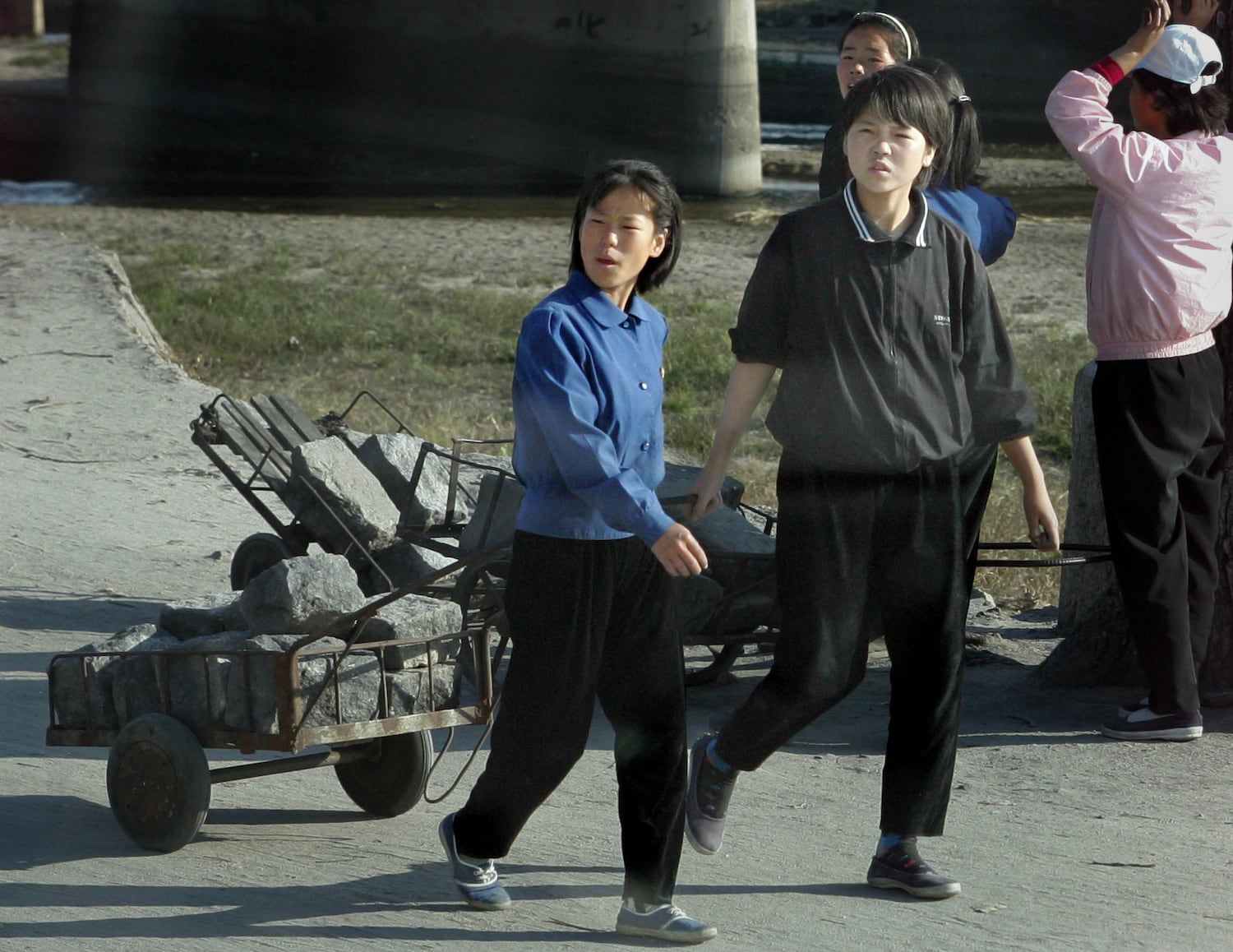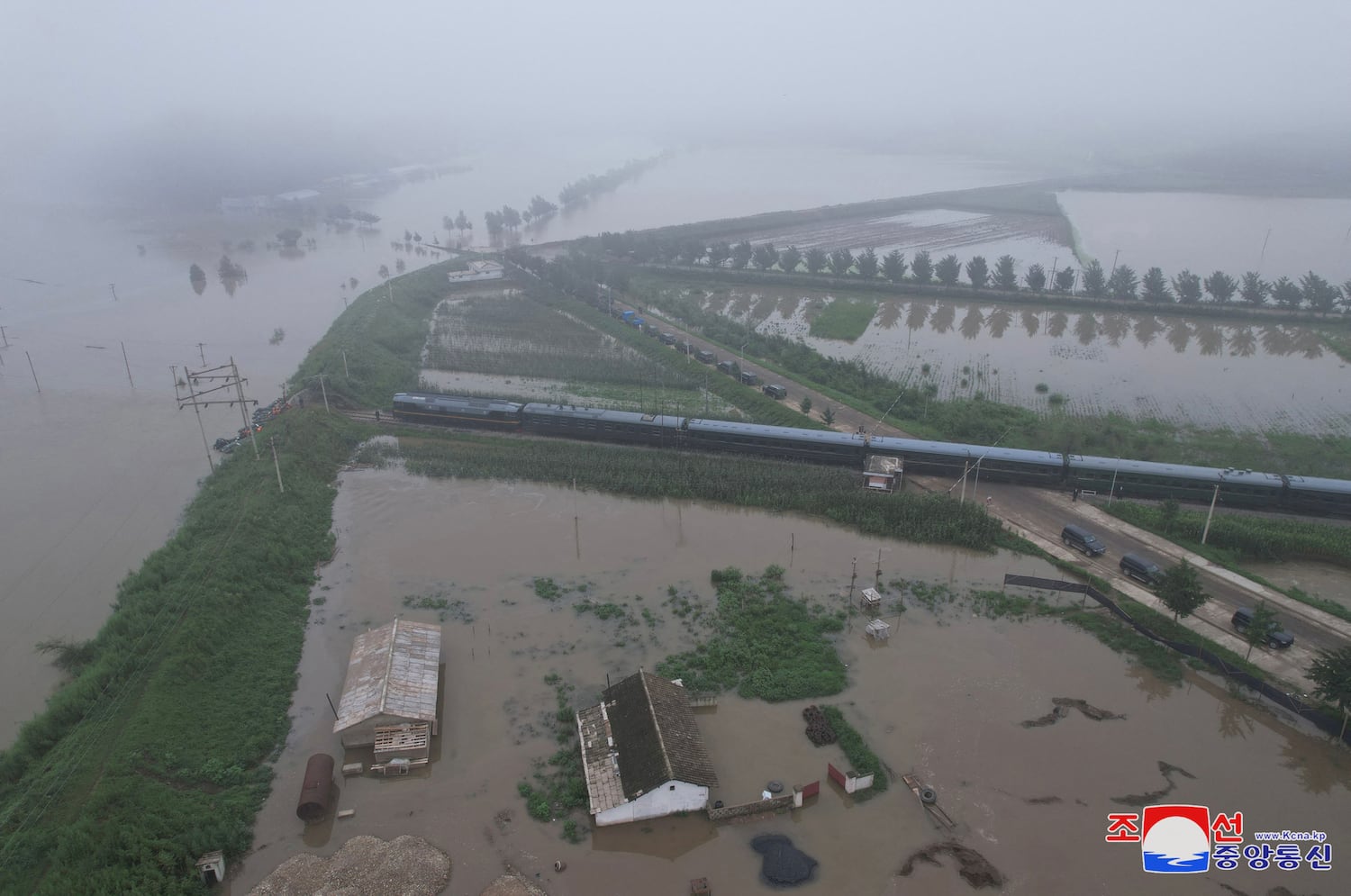North Korea is mobilizing students in the northern border province of Ryanggang to gather rocks daily to help build flood walls as the region braces for seasonal monsoon rains, following devastating floods last year, sources told Radio Free Asia.
Last July, large areas along the Amnok, or Yalu, River near North Korea’s border with China suffered extensive damage, prompting authorities to accelerate flood prevention measures this year ahead of monsoons that typically start in June and last until September.
Last year, South Korean media outlets reported that over 1,000 people were killed or missing due to the floods, and that North Korea may have executed a number of officials who were held responsible.
North Korea’s state-run Korea Central News Agency said over 5,000 people who had been stranded were saved by on-site instructions relayed by leader Kim Jong Un, who was depicted leading flood relief efforts.

Multiple sources in Ryanggang province, also known as Yanggang, told RFA that the construction of embankments were ongoing, and that young students – in elementary, middle and high school levels – have been mobilized to collect rocks daily for the past two weeks without any breaks, including Sundays.
Mobilization orders by North Korean authorities are a common practice by local governments to make citizens donate labor to public projects.
“Each student must contribute five stones the size of a soccer ball to the construction site every day,” a source who works in the education sector of Ryanggang province said.
He, like other sources RFA interviewed for this story, requested anonymity for safety reasons.

Students from Yeondu-dong, Yeonpung-dong, and Songbong-dong areas in Wiyeon District of Hyesan City gather every day, from 2 p.m. until 6 p.m., after they finish their morning classes to “collect rocks the size of soccer balls,” a second source in the province told RFA.
The students are required to bring the rocks they collect to the construction site of an embankment in the upper reaches of the Geumsan River, which flows into the Amnok, the source said. Last year, the Geumsan River was also flooded and caused much damage, he said.
The construction period for the Geumsan River embankment runs until the end of June, but delays are expected due to shortages of stones needed for the walls, sources said.

To meet the shortfall, students from many neighborhoods including Seonghu-dong, Hyesan-dong, Hyemyong-dong, and Yeonbong-dong work afternoons collecting stones at the old quarry in Yeonbong-dong, while those from the outskirts of Hyesan city like Masan-dong, Chun-dong, and Hyetan-dong search through quarries at Hyesan Youth Mine.
The rock gathering exercise has caused accidents and health problems for students, prompting protests by parents at schools, sources said.
“There are many accidents where people hurt their hands and feet while mining rocks, and there are also students who get nosebleeds while sleeping at night due to exhaustion,” said the first source who works in the education sector.
Growing parental dissatisfaction has led to protests at school offices, with some families keeping their children home from school rather than allowing them to participate in the stone collection work, he added.
On Saturday, North Korean state media reported heavy rainfall in the capital Pyongyang and several northern and central provinces, prompting weather authorities to issue alerts across multiple regions.
Pyongyang recorded 140 millimetres of rain between 5 p.m. on Thursday and 8 p.m. local time on Friday, according to KCNA, Reuters reported.
Written by Tenzin Pema. Edited by Mat Pennington.
